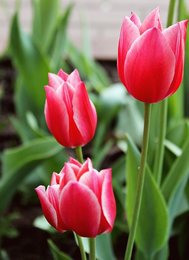 In West Michigan this time of year, especially in the Holland area, it's hard to avoid the hype around the tulip-- and for good reason. These bulbous members of the lily family are an annual reminder that spring has sprung; they thrive in areas with dry summers and cold winters, so West Michigan is a great place to enjoy them. If you're interested in growing tulips, or even if you've had them in your yard for years, we've got some tips for getting the most from these beautiful perennials. For planting:
Tulips don't last long, but they are a welcome flash of color after a cold gray winter. Follow these tips and yours will be the envy of the neighborhood for years to come. Source: Farmer's Almanac. Read more on raising tulips here.
0 Comments
Your comment will be posted after it is approved.
Leave a Reply. |
